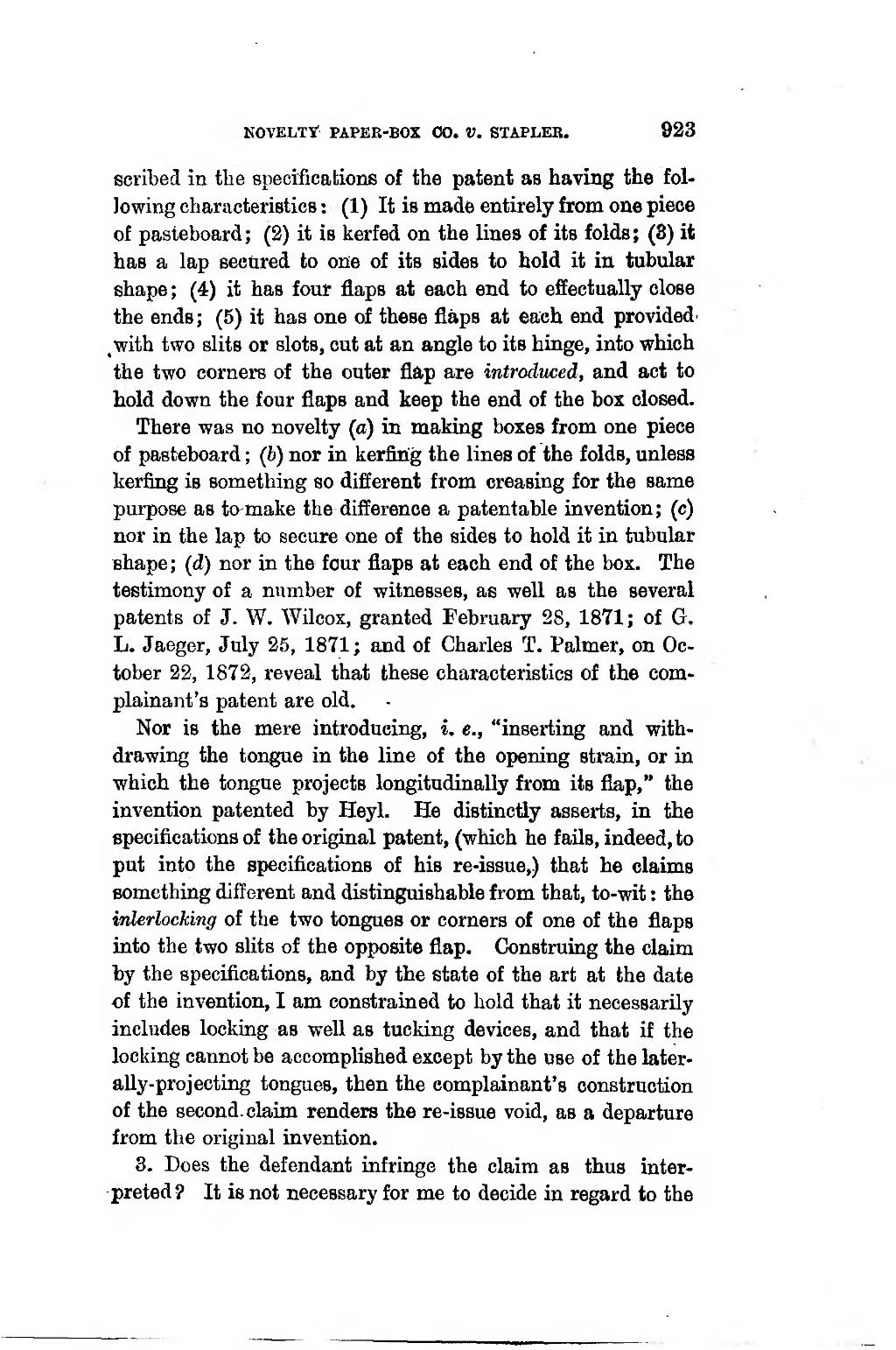NOVELTÏ PAPER-BOX 00. V. STAPLER, 923 �scribed in the specifications of the patent as having the fol- lowingcharacteristica: (1) It is made entirely from one piece of pasteboard; (3) it is kerfed on the lines of its folds; (8) it bas a lap seoured to oûe of its sides to hold it in, tubular shape ; (4) it bas four flaps at eacb end to effectually close the ends; (5) it bas one of these flàps at each end provided' ^witb two slits or slots, eut at an angle to its hinge, into which the two corners of the outer flap are introduced, and act to hold down the four flaps and keep the end of the box closed. �Tbere was no novelty (a) in making boxes from one piece of pasteboard ; (b) nor in kerfirig the lines of the folds, unless kerfing is something ao different from creasing for the same purpose as to make the difference a patentable invention; (c) nor in the lap to secure one of the sides to hold it in tubular shape ; (d) nor in the four flaps at each end of the box. The testimony of a number of witnesses, as well as the several patents of J. W. Wilcox, granted February 28, 1871; of G, L. Jaeger, July 25, 1871 ; and of Charles T. Palmer, on Oc- tober 22, 1872, reveal that these characteristics of the com- plainant's patent are old. �Nor is the mere introducing, î, e., "inserting and with- drawing the tongue in the Une of the opening strain, or in which the tongue projects longitudinally from its flap," the invention patented by Heyl. He distinctly asserts, in the specifications of the original patent, (which he f ails, indeed, to put into the specifications of bis re-issue,) that he claims something different and distinguishable from that, to-wit : the inlerlocking of the two tongues or corners of one of the flaps into the two slits of the opposite flap. Construing the claim by the specifications, and by the state of the art at the date of the invention, I am constrained to hold that it necessarily includes locking as well as tucking devices, and that if the locking cannot be accomplished except by the «se of the later- ally-projecting tongues, then the complainant's construction of the second, claim renders the re-issue void, as a departure from the original invention. �3. Does the defendant infringe the claim as thus inter- preted? It is not necessary for me to decide in regard to the ����
